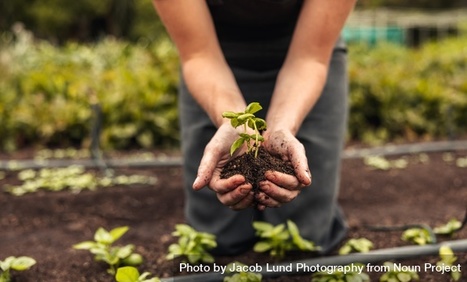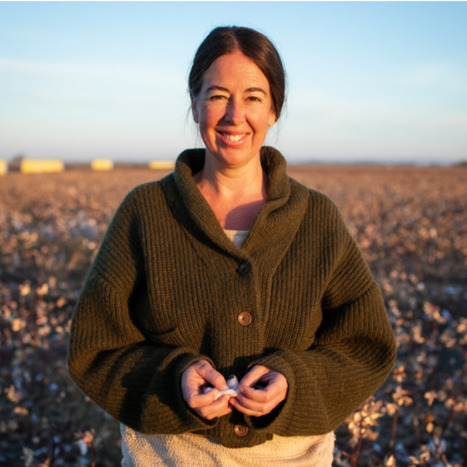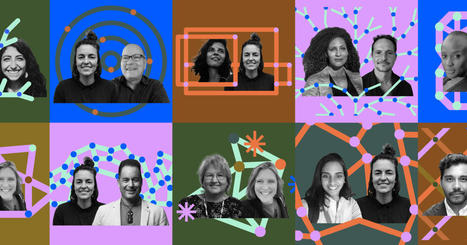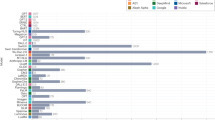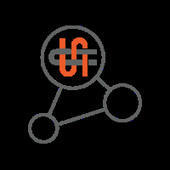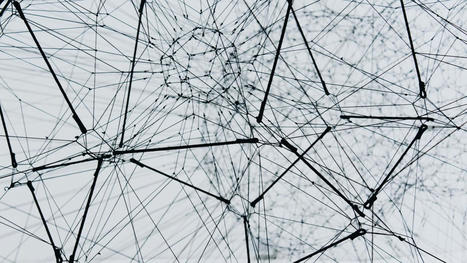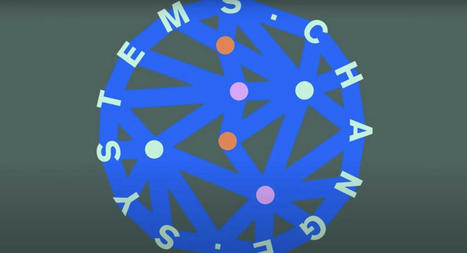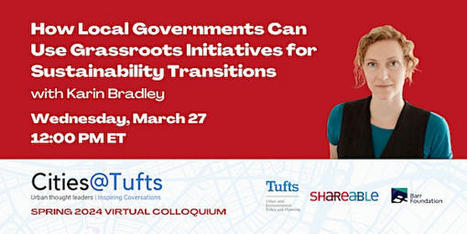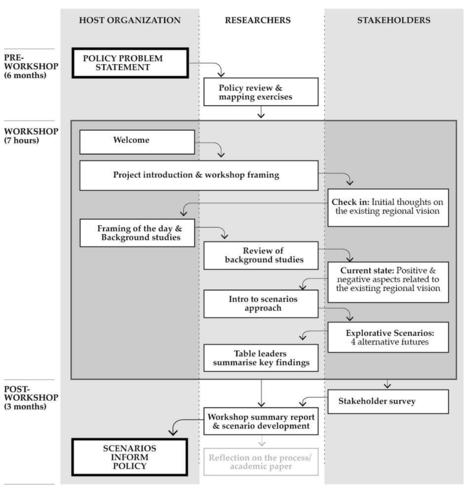 Your new post is loading...
 Your new post is loading...

|
Rescooped by
june holley
from Papers
|
Mohsen Mosleh, Rocky Cole, David G Rand Author Notes
PNAS Nexus, Volume 3, Issue 3, March 2024, pgae111, There is considerable concern about users posting misinformation and harmful language on social media. Substantial—yet largely distinct—bodies of research have studied these two kinds of problematic content. Here, we shed light on both research streams by examining the relationship between the sharing of misinformation and the use of harmful language. We do so by creating and analyzing a dataset of 8,687,758 posts from N = 6,832 Twitter (now called X) users, and a dataset of N = 14,617 true and false headlines from professional fact-checking websites. Our analyses reveal substantial positive associations between misinformation and harmful language. On average, Twitter posts containing links to lower-quality news outlets also contain more harmful language (β = 0.10); and false headlines contain more harmful language than true headlines (β = 0.19). Additionally, Twitter users who share links to lower-quality news sources also use more harmful language—even in non-news posts that are unrelated to (mis)information (β = 0.13). These consistent findings across different datasets and levels of analysis suggest that misinformation and harmful language are related in important ways, rather than being distinct phenomena. At the same, however, the strength of associations is not sufficiently high to make the presence of harmful language a useful diagnostic for information quality: most low-quality information does not contain harmful language, and a considerable fraction of high-quality information does contain harmful language. Overall, our results underscore important opportunities to integrate these largely disconnected strands of research and understand their psychological connections. Read the full article at: academic.oup.com
Via Complexity Digest

|
Scooped by
june holley
|
We enable personal and collective agency to cultivate change in the world with a multi-method approach to systems change learning - with networks, organisations and individuals.

|
Scooped by
june holley
|

|
Rescooped by
june holley
from Papers
|
Xiao Yang, Réka Albert, Lauren Molloy Elreda, & Nilam Ram Social influence processes can induce desired or undesired behavior change in individual members of a group. Empirical modeling of group processes and the design of network-based interventions meant to promote desired behavior change is somewhat limited be-cause the models often assume that the social influence is assimilative only and that the networks are not fully connected. We introduce a Boolean network method that addresses these two limitations. In line with dynamical systems principles, temporal changes in group members’ behavior are modeled as a Boolean network that also allows for application of control theory design of group management strategies that might direct the groups to-wards desired behavior. To illustrate the utility of the method for psychology, we apply the Boolean network method to empirical data of individuals’ self-disclosure behavior in multi-week therapy groups (N = 135, 18 groups, T = 10 ∼ 16 weeks). Empirical results provide descrip-tion of each group member’s pattern of self-disclosure and social influence and identification of group-specific network control strategies that would elicit self-disclosure from the majori-ty of the group. Of the 18 group models, 16 included both assimilative and repulsive social in-fluence. Useful control strategies were not needed for 10 already well-functioning groups, were identified for 6 groups, and were not available for 2 groups. The findings illustrate the utility of the Boolean network method for modeling the simultaneous existence of assimila-tive and repulsive social influence processes in small groups, and developing strategies that may direct groups toward desired states without manipulating social ties. Read the full article at: advances.in
Via Complexity Digest

|
Scooped by
june holley
|
We study the spreading dynamics of content on networks. To do this, we use a model in which content spreads through a bounded-confidence mechanism. In a bounded-confidence model (BCM) of opinion dynamics, the agents of a network have continuous-valued opinions, which they adjust when they interact with agents whose opinions are sufficiently close to theirs. The employed content-spread model introduces a twist into BCMs by using bounded confidence for the content spread itself. To study the spread of content, we define an analogue of the basic reproduction number from disease dynamics that we call an \emph{opinion reproduction number}. A critical value of the opinion reproduction number indicates whether or not there is an ``infodemic'' (i.e., a large content-spreading cascade) of content that reflects a particular opinion. By determining this critical value, one can determine whether or not an opinion will die off or propagate widely as a cascade in a population of agents. Using configuration-model networks, we quantify the size and shape of content dissemination using a variety of summary statistics, and we illustrate how network structure and spreading model parameters affect these statistics. We find that content spreads most widely when the agents have large expected mean degree or large receptiveness to content. When the amount of content spread only slightly exceeds the critical opinion reproduction number (i.e., the infodemic threshold), there can be longer dissemination trees than when the expected mean degree or receptiveness is larger, even though the total number of content shares is smaller.

|
Scooped by
june holley
|
Changes in the timescales at which complex systems evolve are essential to predicting critical transitions and catastrophic failures. Disentangling the timescales of the dynamics governing complex systems remains a key challenge. With this study, we introduce an integrated Bayesian framework based on temporal network models to address this challenge. We focus on two methodologies: change point detection for identifying shifts in system dynamics, and a spectrum analysis for inferring the distribution of timescales. Applied to synthetic and empirical datasets, these methologies robustly identify critical transitions and comprehensively map the dominant and subsidiaries timescales in complex systems. This dual approach offers a powerful tool for analyzing temporal networks, significantly enhancing our understanding of dynamic behaviors in complex systems.

|
Scooped by
june holley
|
June Holley, international network weaving consultant for over 40 years, shared her wisdom and expertise in an interview with Lorenz Sell on Knowledge Sharing for Collective Growth at this year's Transformational Learning Summit.

|
Scooped by
june holley
|
Emily Liebtag shares why systems change is necessary for the growth of learner-centered ecosystems and how we’re working to enable this progress.

|
Scooped by
june holley
|
Moonjelly Foundation is a frictionless, trust-based, no-cost ocean conservation regranter. We find money for our proven partners, so they can spend more time doing good. We are using a Pay It Forward…

|
Scooped by
june holley
|
The solidarity economy movement is ascendant! It’s true. Activists, organizers, and academics have been foretelling its rise in the United States for over a decade. But something new is afoot.

|
Scooped by
june holley
|
This article offers a critical perspective on the increasingly popular relational approach that nonprofit and philanthropic organisations adopt in creating impact networks that drive just and sustainable solutions at scale.

|
Scooped by
june holley
|
Check out what The California Cotton & Climate Coalition (C4) is doing to restore our connection with our working landscapes!

|
Scooped by
june holley
|
What we learned when creating our introductory series to systems change, Stepping Into Systems.
|

|
Rescooped by
june holley
from Papers
|
Francis Heylighen, Shima Beigi, Clement Vidal This report is a first survey of a new, evolutionary narrative, called the Third Story, intended to replace and complement the earlier religious (First) and mechanistic (Second) worldviews. We first argue that the confusions created by a world that is ever more volatile, uncertain, complex and ambiguous (VUCA) have eroded people’s sense of coherence, that is, the degree to which they experience the world as comprehensible, manageable and meaningful. The First Story provides meaning and values, but its descriptions no longer provide an accurate understanding of how the universe functions. The Second Story, which sees the universe as a clockwork mechanism governed by the laws of nature, provides more accurate predictions that allow us to build powerful technologies. However, it does not provide meaning or values. The Third Story sees the universe as self-organizing towards increasing complexity and consciousness, subsequently producing matter, life, mind and society. It understands the fundamental mechanism of evolution as mutual adaptation or “fit” between interacting systems, thus generating synergetic wholes that in turn interact, so as integrate into even more complex wholes. Its implicit value is the search for fitness and synergy, thus inviting individuals to work towards a further integration of the noosphere, i.e. the planetary superorganism formed by humanity, its technological extensions, and the ecosystem. Read the full article at: researchportal.vub.be
Via Complexity Digest

|
Scooped by
june holley
|
April Charlo and Erika Koskela, co-founders of Snqʷeyłmistn, a Salish organization in Montana, USA and Samantha Slade, author of Going Horizontal, co-founder of Percolab, are collaborating to create…

|
Rescooped by
june holley
from Papers
|
HONGZHONG DENG, JI LI, HONGQIAN WU, and BINGFENG GE Advances in Complex SystemsVol. 26, No. 07n08, 2350011 System structure can affect or decide the system function. Many pioneers have analyzed the impact of system’s macro-statistical characteristics, such as degree distribution and giant component, on system performance. But only few research works were conducted on the relation of mesoscopic structure and agent property with system task performance. In this paper, we designed a scenario that, in a multiagent system, agents will try their best to form a qualified team to fulfill more system tasks under the requirements from agent property, structure and task. The theoretical and simulation results show that the agent link network, agent properties and task requirement will co-affect the dynamic team formation and at last have serious effects on a system’s task completion ratio and performance. Some factors such as network density and task introduction period have positive influence. Task execution time and team size have negative influence. Some factors show a counter-intuitive influence. The clustering coefficient has not much influence as people expected and the task publicity time isn’t bigger the better. Notably, system performance is affected by the coupling effect, instead of the independent effects of all factors. The effect of system structure on system function conditionally relies on the support from agent ability and task requirement. Read the full article at: www.worldscientific.com
Via Complexity Digest

|
Rescooped by
june holley
from Papers
|
Michele Avalle, Niccolò Di Marco, Gabriele Etta, Emanuele Sangiorgio, Shayan Alipour, Anita Bonetti, Lorenzo Alvisi, Antonio Scala, Andrea Baronchelli, Matteo Cinelli & Walter Quattrociocchi
Nature (2024) Growing concern surrounds the impact of social media platforms on public discourse1,2,3,4 and their influence on social dynamics5,6,7,8,9, especially in the context of toxicity10,11,12. Here, to better understand these phenomena, we use a comparative approach to isolate human behavioural patterns across multiple social media platforms. In particular, we analyse conversations in different online communities, focusing on identifying consistent patterns of toxic content. Drawing from an extensive dataset that spans eight platforms over 34 years—from Usenet to contemporary social media—our findings show consistent conversation patterns and user behaviour, irrespective of the platform, topic or time. Notably, although long conversations consistently exhibit higher toxicity, toxic language does not invariably discourage people from participating in a conversation, and toxicity does not necessarily escalate as discussions evolve. Our analysis suggests that debates and contrasting sentiments among users significantly contribute to more intense and hostile discussions. Moreover, the persistence of these patterns across three decades, despite changes in platforms and societal norms, underscores the pivotal role of human behaviour in shaping online discourse. Read the full article at: www.nature.com
Via Complexity Digest

|
Scooped by
june holley
|
Alice D. Bridges, Amanda Royka, Tara Wilson, Charlotte Lockwood, Jasmin Richter, Mikko Juusola & Lars Chittka Nature (2024) Culture refers to behaviours that are socially learned and persist within a population over time. Increasing evidence suggests that animal culture can, like human culture, be cumulative: characterized by sequential innovations that build on previous ones1. However,…

|
Scooped by
june holley
|
Takeaways from a series of co-creation workshops In March 2023, Collective Mind launched the results of a major participatory research study on donor funding to networks. As a follow-up to thi…

|
Scooped by
june holley
|
Networks can represent changing systems, like the spread of an epidemic or the growth of groups in a population of people. But the structure of these networks can change, too, as links appear or vanish over time. In a new paper, a trio of SFI-affiliated researchers describe a novel way to aggregate static snapshots into smaller clusters of networks while still preserving the dynamic nature of the system.

|
Scooped by
june holley
|
This work of convening, yarning, curating, weaving, narrating and designing – and all that happened between and beyond – is also systems practice: from these processes, there was learning and change, and, notably, there was emergence.

|
Scooped by
june holley
|

|
Scooped by
june holley
|
Eventbrite - Cities@Tufts presents How Local Gov Can Use Grassroots Initiatives for Sustainability Transitions - Wednesday, March 27, 2024 - Find event and ticket information.

|
Scooped by
june holley
|
As the world becomes increasingly complex, and our jobs, families, movements, and communities require more of us emotionally, managing the tension between planning and emergence gets both harder and more necessary. When pushed to our limits, it is so tempting to retire to our comfortable corners of this binary–either holding tightly to the illusion of a “perfect,” highly mapped-out plan that answers every question or going with the flow in pursuit of new opportunities as they present themselves. %

|
Scooped by
june holley
|
By Giles Thomson and Varvara Nikulina How can transdisciplinary researchers efficiently and effectively support diverse and time-poor actors in participatory scenario planning processes? Scenario planning is a useful tool for policy development, especially for contexts with high uncertainty and complexity as described by Bonnie McBain in her i2Insights contribution, Designing scenarios to guide robust decisions.…
|
 Your new post is loading...
Your new post is loading...
 Your new post is loading...
Your new post is loading...







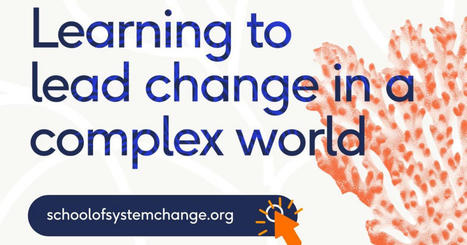
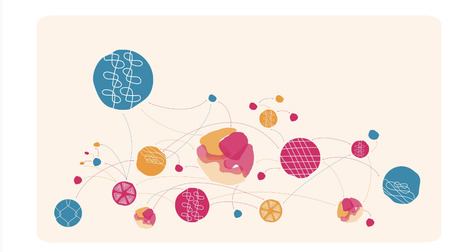

![[2403.01066v1] An "Opinion Reproduction Number" for Infodemics in a Bounded-Confidence Content-Spreading Process on Networks | networks and network weaving | Scoop.it](https://img.scoop.it/R3Nf-aV-zFCPDr3s1jV_-zl72eJkfbmt4t8yenImKBVvK0kTmF0xjctABnaLJIm9)



